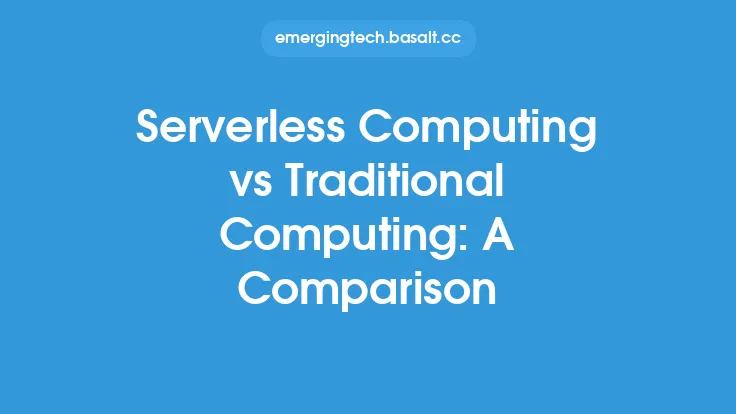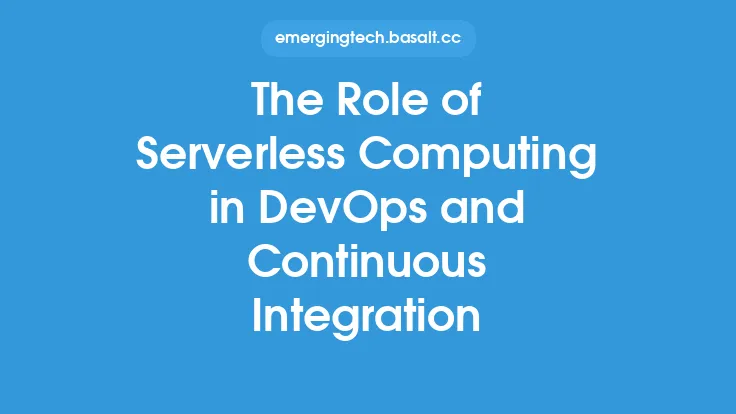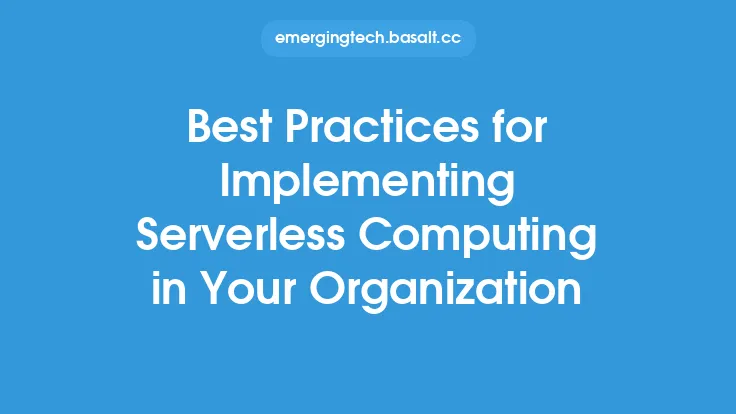Serverless computing has emerged as a game-changer in the world of cloud computing, offering a paradigm shift in the way applications are developed, deployed, and managed. By providing a platform where the cloud provider manages the infrastructure, serverless computing enables developers to focus on writing code without worrying about the underlying infrastructure. This approach has given rise to a plethora of use cases across various industries, and in this article, we will delve into the real-world applications of serverless computing.
Introduction to Serverless Computing Use Cases
Serverless computing use cases are diverse and can be broadly categorized into several areas, including real-time data processing, machine learning, IoT, web applications, and mobile applications. The key characteristic of serverless computing is its ability to scale automatically, making it an ideal choice for applications with unpredictable or variable workloads. Additionally, serverless computing provides a cost-effective solution, as users only pay for the compute resources they consume, eliminating the need for provisioning and managing servers.
Real-Time Data Processing
One of the most significant use cases for serverless computing is real-time data processing. With the exponential growth of data from various sources, including social media, IoT devices, and sensors, the need for processing and analyzing data in real-time has become increasingly important. Serverless computing provides an ideal platform for real-time data processing, as it can handle large volumes of data without the need for provisioning and managing servers. For instance, AWS Lambda, a popular serverless computing platform, can be used to process real-time data from sources such as Amazon Kinesis, Amazon SQS, or Amazon S3.
Machine Learning
Machine learning is another area where serverless computing has found significant traction. By providing a platform for deploying machine learning models, serverless computing enables developers to focus on building and training models without worrying about the underlying infrastructure. For example, Google Cloud Functions, a serverless computing platform, provides a range of machine learning libraries and frameworks, including TensorFlow and scikit-learn, making it easy to deploy and manage machine learning models. Additionally, serverless computing provides a cost-effective solution for machine learning workloads, as users only pay for the compute resources they consume.
IoT Applications
The Internet of Things (IoT) has given rise to a plethora of devices that generate vast amounts of data, which needs to be processed and analyzed in real-time. Serverless computing provides an ideal platform for IoT applications, as it can handle large volumes of data from devices without the need for provisioning and managing servers. For instance, AWS IoT, a managed cloud service, provides a range of serverless computing platforms, including AWS Lambda, Amazon API Gateway, and Amazon S3, making it easy to build and deploy IoT applications.
Web Applications
Serverless computing has also found significant traction in web applications, particularly in the development of modern web applications that require real-time data processing and scalability. By providing a platform for deploying web applications, serverless computing enables developers to focus on building and deploying applications without worrying about the underlying infrastructure. For example, Azure Functions, a serverless computing platform, provides a range of templates and frameworks, including Node.js, Python, and C#, making it easy to build and deploy web applications.
Mobile Applications
Mobile applications are another area where serverless computing has found significant traction. By providing a platform for deploying mobile applications, serverless computing enables developers to focus on building and deploying applications without worrying about the underlying infrastructure. For instance, Google Cloud Functions, a serverless computing platform, provides a range of mobile backend services, including authentication, authorization, and data storage, making it easy to build and deploy mobile applications.
Security and Compliance
Security and compliance are critical aspects of serverless computing, particularly in industries such as finance, healthcare, and government. By providing a platform for deploying secure and compliant applications, serverless computing enables developers to focus on building and deploying applications without worrying about the underlying infrastructure. For example, AWS Lambda, a popular serverless computing platform, provides a range of security and compliance features, including encryption, access controls, and auditing, making it easy to build and deploy secure and compliant applications.
Conclusion
In conclusion, serverless computing has emerged as a game-changer in the world of cloud computing, offering a paradigm shift in the way applications are developed, deployed, and managed. With its ability to scale automatically and provide a cost-effective solution, serverless computing has found significant traction in various industries, including real-time data processing, machine learning, IoT, web applications, and mobile applications. As the demand for serverless computing continues to grow, it is essential for developers and organizations to understand the various use cases and applications of serverless computing and to leverage its benefits to build scalable, secure, and compliant applications. By doing so, organizations can unlock the full potential of serverless computing and stay ahead of the competition in today's fast-paced digital landscape.





